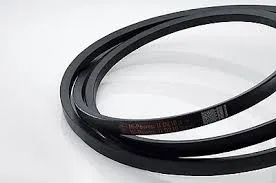- Arabic
- French
- Russian
- Spanish
- Portuguese
- Turkish
- Armenian
- English
- Albanian
- Amharic
- Azerbaijani
- Basque
- Belarusian
- Bengali
- Bosnian
- Bulgarian
- Catalan
- Cebuano
- Corsican
- Croatian
- Czech
- Danish
- Dutch
- Afrikaans
- Esperanto
- Estonian
- Finnish
- Frisian
- Galician
- Georgian
- German
- Greek
- Gujarati
- Haitian Creole
- hausa
- hawaiian
- Hebrew
- Hindi
- Miao
- Hungarian
- Icelandic
- igbo
- Indonesian
- irish
- Italian
- Japanese
- Javanese
- Kannada
- kazakh
- Khmer
- Rwandese
- Korean
- Kurdish
- Kyrgyz
- Lao
- Latin
- Latvian
- Lithuanian
- Luxembourgish
- Macedonian
- Malgashi
- Malay
- Malayalam
- Maltese
- Maori
- Marathi
- Mongolian
- Myanmar
- Nepali
- Norwegian
- Norwegian
- Occitan
- Pashto
- Persian
- Polish
- Punjabi
- Romanian
- Samoan
- Scottish Gaelic
- Serbian
- Sesotho
- Shona
- Sindhi
- Sinhala
- Slovak
- Slovenian
- Somali
- Sundanese
- Swahili
- Swedish
- Tagalog
- Tajik
- Tamil
- Tatar
- Telugu
- Thai
- Turkmen
- Ukrainian
- Urdu
- Uighur
- Uzbek
- Vietnamese
- Welsh
- Bantu
- Yiddish
- Yoruba
- Zulu
Rgp . 20, 2024 20:47 Back to list
Understanding the Functionality of Timing Belt Motors in Mechanical Systems
Understanding Timing Belt Motors A Key to Efficient Machinery
The timing belt motor is a critical component in various machinery and automotive applications, playing a vital role in the synchronization of engine components and ensuring smooth operation. As technology evolves, so too does the importance of understanding the mechanics behind timing belt motors, their functions, and their advantages.
What is a Timing Belt Motor?
A timing belt motor combines the functions of an electric motor and a timing belt, which is a reinforced rubber belt featuring teeth or grooves on its inner surface. This design allows it to transfer power from the motor to rotating components seamlessly. The primary purpose of a timing belt is to ensure that the crankshaft and camshaft of an engine rotate in sync, preventing any misalignment that could lead to engine failure or reduced performance.
The Mechanics of Timing Belts
In the context of an engine, the timing belt connects the crankshaft, which converts linear motion into rotational motion, to the camshaft, which controls the opening and closing of engine valves. The precision with which these components operate is crucial; even a slight misalignment can cause internal damage. The timing belt motor, therefore, becomes indispensable for maintaining this synchronization.
In machinery applications, timing belt motors are utilized in conveyor systems, robotics, and various automated processes. Their ability to maintain accurate timing means they are ideal for applications requiring precise movements, such as in assembly lines or robotic arms.
Advantages of Timing Belt Motors
timing belt motor

1. Efficiency Timing belt motors are known for their ability to minimize energy loss. The positive engagement between the motor and the belt ensures that power is transmitted efficiently, which is especially important in applications where performance is critical.
2. Low Maintenance Unlike chain-driven systems that require regular lubrication and adjustments, timing belt motors demand minimal maintenance. The belts themselves can last for long periods, and their construction reduces wear and tear, contributing to longer operational lifespans.
3. Noise Reduction Timing belts operate more quietly than chain systems or gears. This feature is particularly beneficial in environments where noise reduction is essential, such as in robotic operations or office settings.
4. Compact Design The relatively small size of timing belt motors allows for a more compact design in machinery, which is crucial in applications where space is limited. This compactness, combined with their efficiency, makes them a preferred choice for many engineers.
5. Versatility Timing belt motors can be found in various applications, from automotive engines to industrial machinery and even home appliances. Their versatility makes them an essential component across multiple sectors.
Conclusion
The timing belt motor is a foundational element in modern mechanical systems that require reliable and precise motion control. Understanding their operation and benefits is essential for anyone involved in engineering, manufacturing, or automotive industries. As technology advances, the role of timing belt motors will likely expand, driving innovations and efficiencies that enhance performance across various applications. Investing in quality timing belt motors not only ensures the longevity of equipment but also contributes significantly to the overall efficiency of operations, solidifying their place as an essential component in the machinery landscape.
-
Korean Auto Parts Timing Belt 24312-37500 For Hyundai/Kia
NewsMar.07,2025
-
7PK2300 90916-T2024 RIBBED BELT POLY V BELT PK BELT
NewsMar.07,2025
-
Chinese Auto Belt Factory 310-2M-22 For BMW/Mercedes-Benz
NewsMar.07,2025
-
Chinese Auto Belt Factory 310-2M-22 For BMW/Mercedes-Benz
NewsMar.07,2025
-
90916-02660 PK Belt 6PK1680 For Toyota
NewsMar.07,2025
-
drive belt serpentine belt
NewsMar.07,2025

